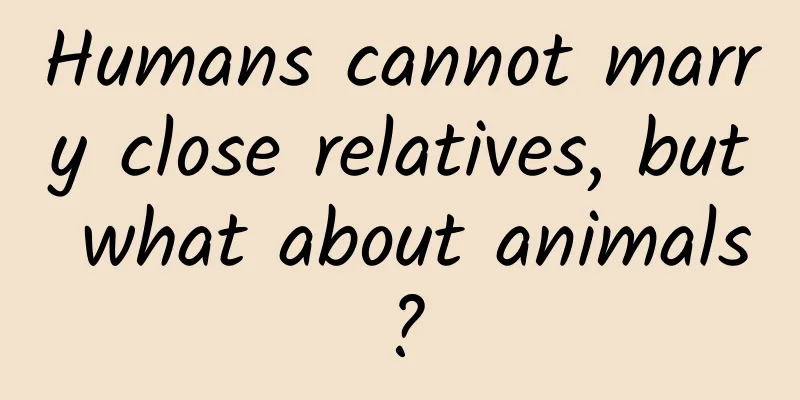In an era when aerospace is not valued, scientists choose to write their research into novels

|
The return capsule of China's Shenzhou 13 manned spacecraft landed successfully on April 16, and three astronauts who had been on a mission at the space station for half a year left the spacecraft smoothly. The Shenzhou 13 manned mission will contribute to China's future space research, especially the exploration of the moon and Mars, and will help China's exploration of space to go deeper. Humans have always yearned for the vast and mysterious starry sky, and in the myths of various nations, there are imaginations of flying to the sky. Later, in the writings of writers, some of these fantasies were quite outrageous and some were close to reality: in the True Story by the Greek writer Lucian, the protagonist was swept to the moon by a whirlwind, and in the Sun and Moon - A Journey in Two Worlds by the French writer Hirano, the protagonist took off with the help of evaporating dew. Only in modern times, the German astronomer Kepler mentioned special space suits, jet propulsion, weightlessness and other technological imaginations in his work Dreams (1600). The space fantasy based on modern science came from the works of two early science fiction masters. In 1865, the French science fiction pioneer Jules Verne published From the Earth to the Moon (and the sequel Around the Moon in 1870), in which three astronauts were sent to the moon using a cannonball loaded with supplies. In 1901, the British science fiction pioneer Wells' The First Men in the Moon was published, in which the protagonist used the "Cavo" material that can intercept gravitational waves to build a spacecraft to land on the moon. Stills from the first science fiction film "A Trip to the Moon" (Photo provided by the author) In 1902, French director Méliès made the first science fiction film ever, A Trip to the Moon, based on the above works. This film, made with stop-motion animation technology, seems somewhat crude now, but it was extremely revolutionary at the time. Don't think that Verne's way of landing on the moon is childish and ridiculous. We only need to compare it with the completely unscientific "balloon landing on the moon" in "The Adventures of Hans Pfarr" (1835) by American writer Edgar Allan Poe. Besides, Newton actually designed a thought experiment called "Newton's Cannon" to make a cannonball fly away from the earth. Unfortunately, we have not yet found a way to block gravitational waves. Sketch of Newton's Cannon In fact, after Verne and before Wells, there was another Russian who created more realistic space science fiction works, and that was Tsiolkovsky. Tsiolkovsky is known as the "Father of Russian Spaceflight", and his words "The Earth is the cradle of mankind, but mankind cannot be bound to the cradle forever" still inspire us today. Tsiolkovsky is also known as the "Father of Russian Science Fiction", but the origin of this title is somewhat bitter. This is mainly because the scientific community at that time did not pay much attention to aerospace, and even papers with the word "aerospace" in the title would be directly rejected. Therefore, Tsiolkovsky's early research was not understood, and he had to publish it in the form of science fiction. In 1878, he completed "On the Moon" (which was serialized in 1892), and in 1895 he published "The Universe Calls". Although Tsiolkovsky's scientific research situation changed later, his interest did not diminish, and he still created "Beyond the Earth" (1920). Tsiolkovsky By the way, scientists engaged in aerospace research in the United States at that time were in a similar situation. When Goddard, the "Father of Rockets" in the United States, wrote his aerospace paper, he had to give it such an obscure title: "A Method of Reaching Extreme Altitudes"! However, when Goddard recalled his dreams in his youth, he also specifically mentioned the great influence of Jules Verne and Wells' works on him. Tsiolkovsky's works greatly influenced another Russian, Belyaev. Belyaev's most famous science fiction work is "The Head of Professor Towell", but in the 1930s, he created a series of science fiction novels about rockets and aerospace based on Tsiolkovsky's astronautics theory, among which "Leap into the Sky" is the most outstanding. The real culmination of aerospace technology is still "2001: A Space Odyssey" by the British science fiction master Clarke. This is a science fiction work that explores cosmic civilization, but the author spent a long time in 6 chapters (Chapter 2 to Chapter 5) to discuss the topic of aerospace in detail. Even after the protagonist enters the "Star Gate" in Chapter 6, there are still aerospace factors - the spacecraft enters a huge cosmic transfer station and is arranged by a more advanced civilization to go to other galaxies. Of course, this way of aerospace has exceeded our current physics, just like the science fiction movie "Interstellar", the first part is based on realistic aerospace technology, and the latter "traveling through wormholes" no longer belongs to the usual concept of aerospace. 2001 A Space Odyssey Source: Douban Movies Clarke also has a popular science fiction short story "Solar Sailing", which describes the use of "solar wind" in aerospace. The story describes a spacecraft powered by "solar wind", which becomes the fastest object in the universe under the continuous acceleration of "solar wind". Regarding aerospace, there is another science fiction short story worth mentioning, that is "A Cold Balance" by American science fiction writer Godwin. The basis of this story is: the fuel carried by each spacecraft must be carefully calculated, and there is a precise balance between the fuel and the mass of the spacecraft; due to the appearance of a stowaway, this balance was broken, and the captain had to make a painful decision... This story tells us: Any self-righteousness that violates the laws of science will be severely punished. Asimov Asimov, the American science fiction master, has also written some aerospace science fiction works, but his most brilliant expositions are in his popular science works. After Asimov expounded on various aerospace countermeasures such as high-speed spacecraft, freezing technology, and time delay caused by the relativistic effect in "Extraterrestrial Civilization", he still lamented the insignificance of human beings compared to the vast universe, so he proposed another brain-opening aerospace method: If one day, humans can make the earth get rid of the gravity of the sun and obtain energy in the universe, the earth will no longer have to be bound to the periphery of the sun, and will drift freely among the stars from then on. It does not need to be very fast, because inside it, life continues to multiply and civilization develops in an orderly manner. At this point, Asimov raised a question: "Why do they do this?" Then he forcefully asked back: "Why don't they do this?" ——It is sonorous and powerful. We are not wandering passively, but actively traveling. The universe is so big, I want to see it! Source: Popular Science Times Author: Xinghe is a professional writer of Beijing Writers Association, mainly engaged in science fiction and popular science writing Editor: Mao Mengnan Review: Wang Fei Final judge: Chen Lei |
>>: Leaking urine when coughing? This "embarrassing" disease is ignored by many people...
Recommend
The value of WeChat phone book is not overestimated
After the launch of WeChat Phone Book, my first i...
Who do you want to help Lu Qi pick? Xiaomi, Tencent, Alibaba, Didi, JD.com, Toutiao...
Today is the tenth day since Lu Qi left Baidu. In...
Cainiao Station is being held hostage
"I started to transfer the Cainiao Express S...
Are you still carpooling or group-fighting? Let's ride on a rocket together.
In the era of rapid development of the sharing ec...
Another mysterious "aliens" has visited Earth! It's visible to the naked eye!
Following Comet Neowise in 2020 and Comet Leonard...
Mid-year review | A collection of marketing cases in the first half of 2018!
New media will emerge in an endless stream as tec...
In the real US color TV market, it is as difficult for domestic brands to be recognized as it is to create another Apple.
"Sell TVs to the United States!" has be...
9 questions and 9 answers! There is a kind of pain called "herpetic neuralgia"
Produced by: Science Central Kitchen Produced by:...
The future of voice recognition will not only be able to "understand" what the user says, but also...
With the rapid development of information technol...
Sony: Semiconductor business investment to decrease by 30% year-on-year in the next three years
Sony Group's semiconductor division recently ...
How can podcasts become a traffic pool for overseas brands?
In addition to the huge prospects for overseas ex...
Great news! Apple iOS App reservation function is now fully available!
What was it we talked about last year? Was App St...
International Consumer Rights Day丨“Free XX”, is it really free?
China Consumers Association The results of the 20...
Essentials of the Practical Salon | Qiu Ma analyzes the advantages and disadvantages of the top ten channels from an APP operation path
Too many guests expressed regret for missing the ...
Complete collection of New Concept English course video tutorials, New Concept English New Oriental teaching videos!
Complete collection of New Concept English course...









